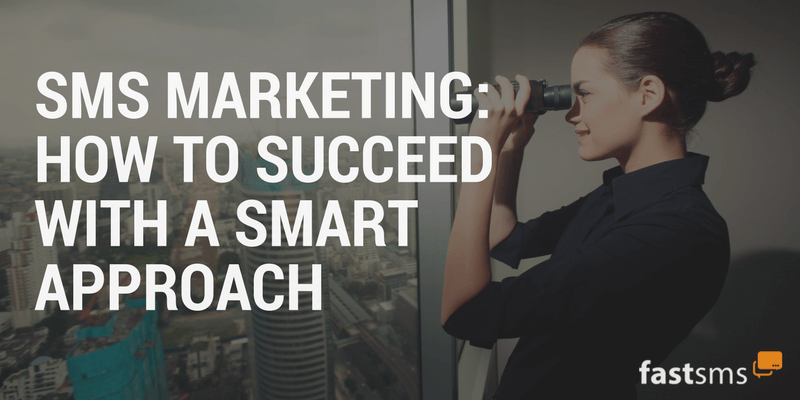Start the New Year with one interesting prediction for SMS messaging

Across the web there are many articles predicting the future of mobile and SMS. I picked the most interesting one (to me anyway) to focus on for the first blog of 2015.
What it is
You’ve all seen the share buttons on web content. They go hand in hand with online articles and videos. Usually you can share by posting directly to Facebook, tweeting on Twitter, emailing a link, and sometimes you have sharing options like Digg and Reddit (among many others).
In 2015, you just might start to see an option to share via text message too.
From what I’ve found, the source of this prediction is James Mottram, director of content development for USA Today Sports Media Group. He’s been quoted as saying, “Everyone starts adding SMS share buttons to content,” when asked for his big prediction for mobile in 2015.
How it works
The SMS share buttons would work just like other share buttons. SMS providers or web developers would use the service’s application programming interface (API) to create the code that would send an SMS message with a link to the content. Website and content owners with SMS accounts could then put the code at the end of their articles or videos. The share buttons would appear with all the others.
If you as the viewer or reader wanted to share it with someone, you’d click on the SMS button, enter the mobile number you wanted to send to and off the message would go.
Upsides to SMS sharing
Everyone wants their website content shared for SEO purposes, increasing website traffic, brand recognition and a host of other reasons. And for all those same reasons, another channel for sharing is a good thing.
Mottram, along with his quote about adding SMS share buttons, has discussed how they used SMS sharing on the USA Today website. Specifically they added it to their “For The Win”, or FTW, section of the website. FTW is a video driven sports interview and review part of USA Today. The results Mottram discusses are pretty astounding. The SMS share buttons were used 3-4 times more often than Twitter buttons.
As of this writing though, the SMS share buttons were no longer on FTW. The quotes from Mottram were all late last year so it’s possible they are still in the testing process. There’s no way to be sure of course.
In discussing SMS, Cooper Fleishman of DailyDot.com, agrees with Mottram’s predictions. He goes on to add, “Sharing links via text feels more personal. It’s more immediate than shooting friends an email they’re free to ignore.”
So not only does sharing increase with the option of sending via SMS, the share is likely to have more impact on the recipient because of how personal SMS messages are – especially when received from friends and family.
But there are downsides
As a content provider, adding an SMS share button has some downsides too.
The first is there is no standard yet on how it works or how it should look. Each SMS service provider or developer will likely create their own button for sharing and people will not immediately recognise them the way they do Facebook or Twitter buttons. That doesn’t mean it can’t work (as the FTW example shows), but it does highlight that you will have to make it clear what the purpose of the button is to website visitors. At least until a standard graphic representation of SMS sharing evolves.
Another downside is, of course, the cost. Since it is impossible to know ahead of time how many SMS shares you will get on a particular piece of content, or even any of your content, budgeting for SMS messages becomes an issue. This isn’t insurmountable though as you can try it out on limited content at first to get an estimate of how often your visitors would use the buttons. Also most SMS service providers offer the option of setting spending limits, or at worst, the buttons will no longer work when you’ve run out of message credits. In effect, that allows you to set an upper threshold on the cost.
You might be tempted to hook up with one of the free text or SMS service providers for sharing too. After all, content sharing messages don’t necessarily need to be received in a timely fashion. But with free services, delivery isn’t guaranteed so the shares may never be received, or received so late as to make them irrelevant. That can upset your website visitors who sent the message but discovered it was never received. It also isn’t good for you since the intended recipient never had the opportunity to visit your website and perhaps discover other things of interest. You may have lost a sale, or subscriber, or missed an opportunity to convert the recipient into a customer.
One more potential downside is regulations. Since the messages will likely be sent to people not on your own list, you’ll have to make sure the message comes from the person sharing it. And the message should be clear on who sent it, even though it originated with you. This is another area where the standards and best practices are not clearly defined when using SMS this way. But it likely can be managed the same way an email share is by including the name of the sender as the official sender so the recipient knows who it is from.
What do you think of SMS sharing buttons? Would you use them on your website? Would you send links via SMS if you had the option (and there was no cost to you)?
Related Articles
9 High Conversion Power Words for SMS Marketing
SMS Marketing: Don’t Forget About Print!
The focus for advertising campaigns today is often mobile, web, or digital. It’s certainly true that more and more people are using technology for just about everything. But with all that technology, it’s easy to overlook another, more traditional form: Print!
Three Things You Must Do Right in Your SMS Marketing
SMS messaging can be one of your more effective marketing techniques, but only if you do it right. A poorly executed SMS marketing campaign could have disastrous results for your future budget, and for your organisation.
SMS Marketing – 4 of the UK’s Best Ever Campaigns
Discover how to come up with an SMS marketing campaign in this article which looks under the surface of some of the UK's most successful ever SMS marketing campaigns. Whether you are looking to boost revenue, improve customer satisfaction or help your brand stand out with a unique and memorable promotion, this article shows how a simple approach to SMS messaging can work wonders for your company.
SMS Marketing – How to Succeed with a SMART Approach
Avoid Ad Blockers by Using SMS Marketing
Mobile marketing includes many different advertising channels. Most of them include placing an ad in front of a mobile user. Many of us are used to ads online, but they do tend to get annoying. At least that’s according to an eMarketer report on a study done by Instantly.
6 Ways to Get Results, and Not Annoy People, with SMS Marketing
Using SMS marketing is one highly effective way to maintain relationships with mobile users, but there's an incredibly fine line between engaging with someone and annoying them to such an extent that they swiftly delete your marketing messages and never want to hear from you again. Here's 6 things to keep in mind to make sure you don't annoy your subscribers.
How A/B Testing Works in SMS Messaging
A/B testing in SMS messaging is something that sounds vague and possibly complicated. But with a little knowledge it’s something you can do for your organisation. We make it simple to understand and share some tools to make it easy to do.
3 tips to building recipient lists for SMS campaigns
As SMS boasts a 95% open rate, it makes sense to ensure you can utilise this channel with your entire target audience. Read our tips on building SMS recipient lists.
Proof SMS Messaging Gets Results: Giveaways and Contests
Companies use contests and giveaways all the time. It turns out that doing them over SMS messaging works really well, and offers some advantages over other channels. Read our blog to see the types of results various companies achieved when using SMS giveaways.











